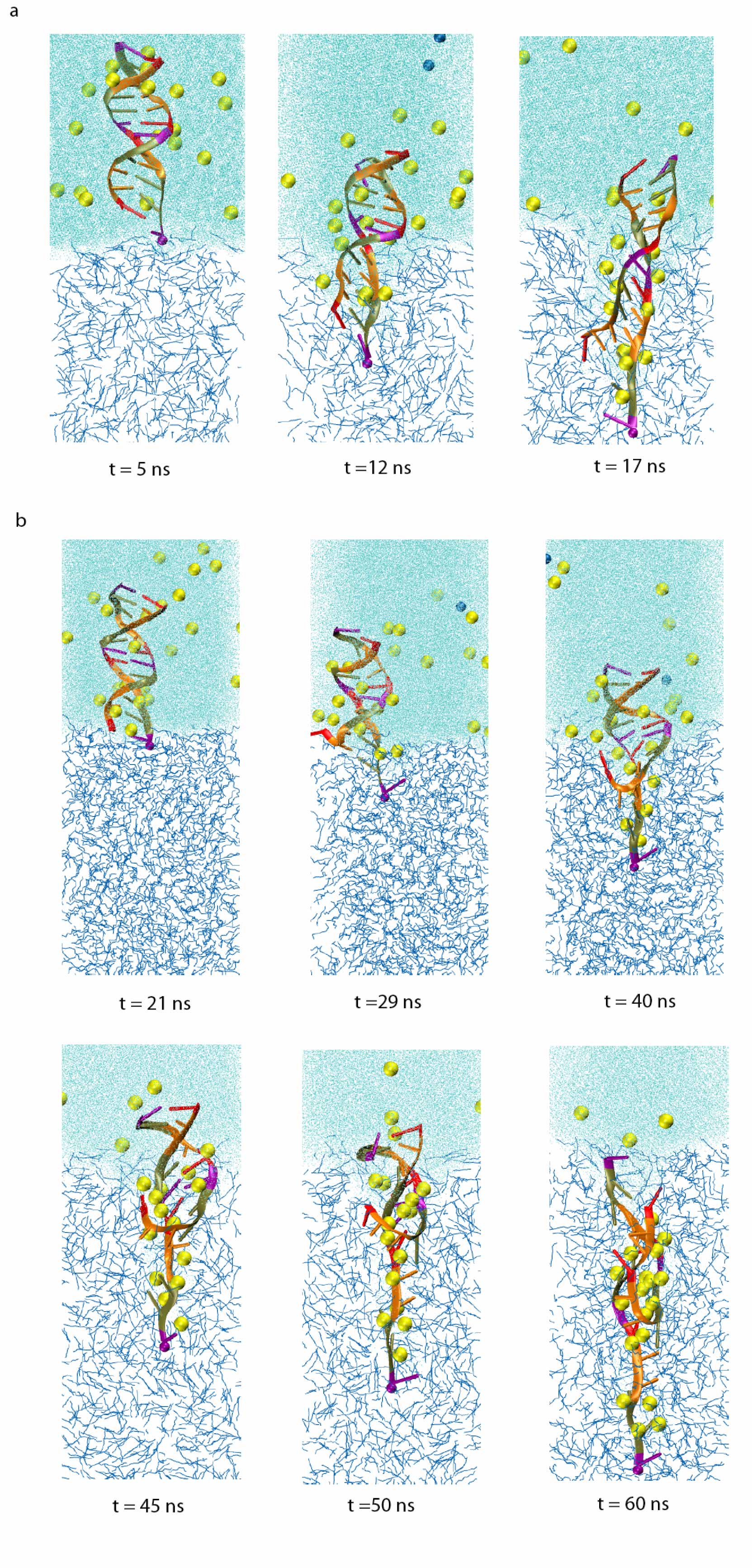A novel DNA-splitting mechanism: pulling DNA from polar to nonpolar solvent
It is known that the mechanical stability of DNA strongly depends on the ambient conditions. Water, a polar solvent, plays an important role in maintaining the double helical structure of DNA. An interesting question is, if the double stranded DNA (dsDNA) is dragged from water to a poor solvent, i.e., solvent with a comparatively low polarity, what would happen to the conformation of the dsDNA?

To investigate the impact of the environment change on double strand stability of DNA, we conducted a computational study using the all-atom molecular dynamics (MD) simulation, in parallel with an experimental approach using AFM-based single molecule force spectroscopy, to pull one end of the DNA strand gradually from water to octane. Consistently with the experimental discovery, we found that as the strand was pulled across the water-octane interface, the other strand started lagging behind and splitting apart (see images on the right taken from two simulations a and b, conducted at different pulling speed). This phenomenon did not happen if the DNA-pulling process was kept within water ambient, so the splitting was unlikely only due to the viscous force from the solvent. Movies made from the MD trajectories are provided below:
- 1st MOVIE (24 M): pulling one strand of DNA, from water to octane (simulation a).
- 2nd MOVIE (38 M): pulling one strand of DNA, from water to octane (simulation b).
- 3rd MOVIE (23 M): pulling one strand of DNA, from water to octane (simulation b continue).
For simulation details, please see our publication. Further investigations are needed to fully understand this DNA-splitting mechanism. Nevertheless, one may speculate that some of the helicases may have adopted the mechanism in separating the double strands of DNA. Still, further evidence is needed to support this speculation.
Besides, there are additional interesting observations made from our MD simulations, which suggest (nonpolar) solvent-induced B-S transition of dsDNA:
- 4th MOVIE (16 M): pulling both strands of DNA, from water to octane (transition from B-form to S-form of DNA)
- 5th MOVIE (4 M): equilibrating DNA put initially in octane (transition from B-form to S-form within picoseconds!)
Publication
Investigators
Page created and maintained by Jin Yu.



